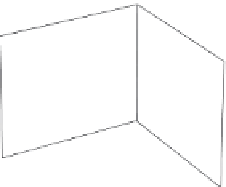Biomedical Engineering Reference
In-Depth Information
Knee Flexion (Males)
8 parameter logistic model
Knee Extension (Males)
8 parameter logistic model
140
275
120
140
220
275
100
120
80
165
220
100
60
110
80
165
40
60
55
20
110
40
0
0
55
20
100
100
80
0
80
0
60
60
-100
-200
-100
-200
40
Angle (deg)
40
Angle (deg)
0
0
20
100
20
100
200
0
200
300
0
300
Velocity (deg/s)
Velocity (deg/s)
FIGURE 6.9
Measured (concentric, from
Figure 6.3
) and estimated (eccentric, 120% of isometric peak
torque) strength plotted as points, with the logistic, 8-parameter surface models shown
concurrently.
6.5
Representing strength percentiles
Clearly, strength varies across individuals, thus normative strength can be best
represented by population means and/or strength percentiles. These strength sur-
faces are frequently fit from average or median data, however could also be fit to
any strength population percentile (%ile). For DHM, normative strength can be
easily modeled using z-scores, where any percentile level is equal to the mean plus
the appropriate z-score (see
Table 6.1 for
standard z-scores by percentile) multi-
plied by the standard deviation (SD, Equation
6.2
). Thus, the 50
th
%ile strength
level for either men or women is simply the mean (since
0 for 50
th
%ile). This
is valid for normally distributed data, which we found to be true for knee and elbow
strength (
Frey-Law et al, 2012b
) when separated by sex.
z
5
-score %ile
SD
%ile strength
mean strength
1
ðz
Þ
(6.2)
5
The standard deviation can also be modeled as a 3D surface as a function of
contraction velocity and joint angle, but a simpler approach is to represent it by
the mean coefficient of variation (CV,
Equation 6.3
) across all joint angles and
contraction velocities. The coefficient of variation is simply the standard devia-
tion standardized by the mean. This allows for limited modulation of standard
deviation values with little additional computational effort. We have found CV
varies somewhat between joints and contraction types but centers roughly on a
value of 0.3 (
Frey-Law et al., 2012b
).
=
mean (6.3)
Thus, combining
Equations (6.2) and (6.3)
, we can calculate strength percen-
tiles as indicated in
Equation (6.4)
(i.e., %ile strength is a function of joint
CV
5
SD
































































































































































































































































































































































































































Search WWH ::

Custom Search